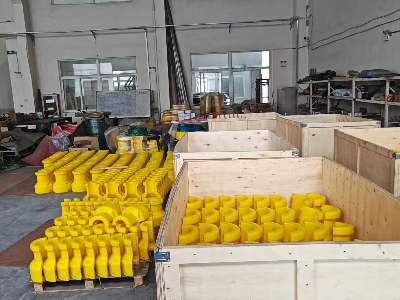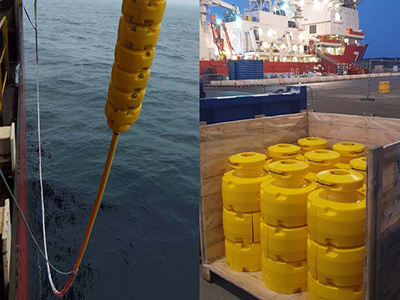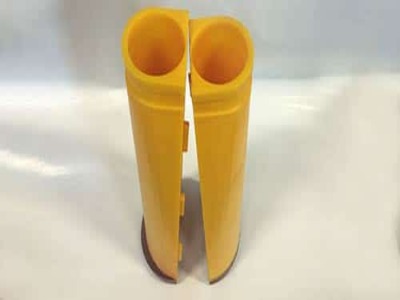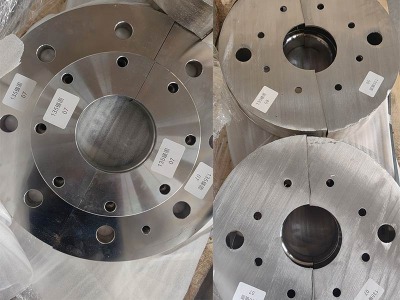What Are Bend Protection Solutions
In offshore wind power and subsea engineering, bend protection solutions are essential for ensuring the long-term integrity and performance of umbilical cables, power cables, and flexible risers. These solutions are specifically designed to prevent excessive bending, reduce mechanical stress, and protect cables at critical interface points, such as cable exits from platforms, J-tubes, or floating structures.

Excessive bending can lead to fatigue damage, loss of insulation, and eventual failure of cables—posing serious operational and safety risks. To counter this, a variety of bend protection components are implemented. This article focuses on four key devices: bend restrictors, bend stiffeners, cable hang-offs, and J-tube centralizers.
Bend restrictors: Mechanical bending control
Bend restrictors are typically used in dynamic or subsea cable applications where there is a risk of the cable being bent below its minimum bend radius. They consist of a series of interlocking articulated elements—often called a "vertebrae" structure—that allow limited angular movement while preventing sharp bends.
Key characteristics:
Rigid segment construction (polyurethane composite materials)
Suitable for high-load and high-pressure subsea environments
Customizable to match cable diameter and bend radius requirements
Provides mechanical protection during installation and operation
Function:
They are commonly installed at the cable exit points on subsea structures or floating platforms, particularly where wave, current, or mechanical tension may cause uncontrolled bending.

Bend stiffeners: Gradual flexural support
Bend stiffeners are flexible, tapered sleeves made from durable elastomeric materials, such as polyurethane. They are typically used at termination points to provide a gradual stiffness transition, reducing the risk of kinking or fatigue at the cable bend.
Key characteristics:
Conical or cylindrical shape with variable stiffness along its length
High resistance to UV, saltwater, and abrasion
Designed to withstand repeated dynamic movements (e.g., floating platforms)
Function:
They absorb and distribute the mechanical loads over a larger area, thus protecting the cable from fatigue where it connects to a fixed or floating structure.
Cable hang-off: Secure termination and load transfer
Cable hang-off systems serve the purpose of mechanically terminating and securing the cable at the top of offshore platforms, wind turbine towers, or J-tubes. They transfer the cable's self-weight and tension loads into the structure without damaging the cable itself.
Key characteristics:
Mechanical or hydraulic clamping design
Compact, corrosion-resistant structure
Suitable for topside or subsea applications
Function:
They are critical for maintaining the axial load balance of the cable and ensuring that no excessive bending or axial stress is transferred to the vulnerable cable core.
J-Tube centralizers: Centered cable positioning and guidance
J-tube centralizers are designed to guide and center subsea cables as they are pulled through a J-tube or I-tube during installation. Misalignment within the tube can cause abrasion or stress damage.
Key characteristics:
Made from polyurethane or other non-abrasive, high-strength materials
Modular split-shell design for easy installation
Designed to fit specific cable diameters and J-tube dimensions
Function:
They ensure that the cable remains centered and free of contact with the inner wall of the tube, minimizing friction, wear, and impact damage during pull-in and service life.
Bend protection solutions are indispensable in offshore wind and subsea applications, where environmental forces and operational demands pose a constant threat to the health of umbilical and power cables. Whether through the rigid mechanical limitation of bend restrictors, the flexible reinforcement of bend stiffeners, the load-bearing design of hang-off systems, or the guidance provided by centralizers, each component plays a crucial role in maintaining cable integrity.
By using a tailored combination of these protection systems, project developers and offshore operators can significantly reduce maintenance risks, extend cable life, and ensure safe and efficient operation in harsh marine environments.




